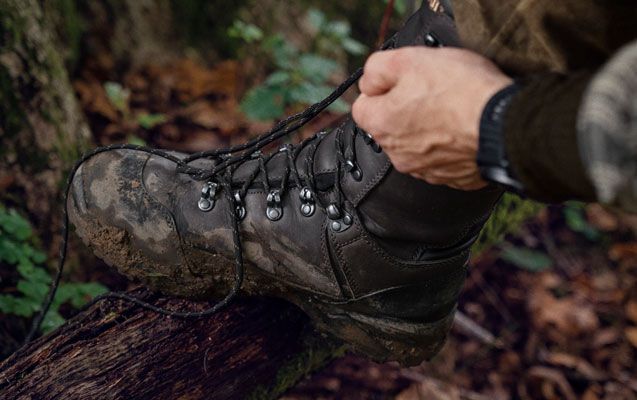How to
Get the best hunting footwear
Your boots are maybe the most vital part of your hunting wardrobe. Bad boots can ruin any hunt while good, well-fitting boots can greatly improve it.
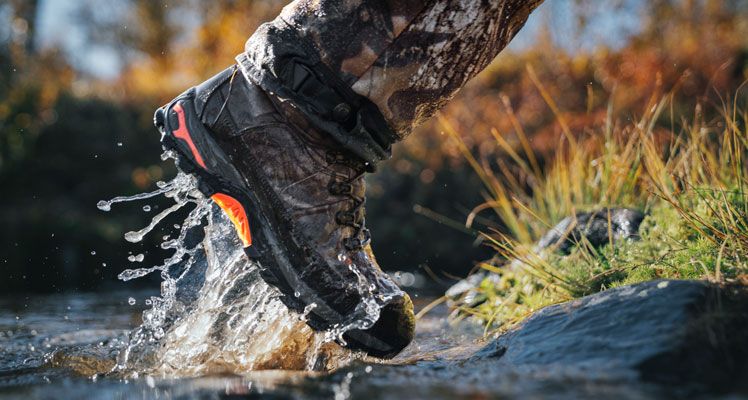
Most active outdoor people know that good boots are vital to comfort in the field. Anyone who has ever attempted to challenge the wilderness with inadequate footwear knows what we mean.
During a hunting adventure, the boots are supposed to optimize your capability to challenge rough terrain by ensuring good traction and support and protect your feet and ankles while keeping them comfortably warm and dry.
There are plenty of details to pay attention to when you are choosing the right pair of boots for hunting. Comfort, support, weight, warmth, waterproofness, and durability are among the most critical factors.
“Remember that you should not buy boots as a last-minute activity. It's a brilliant idea to use the boots in your everyday life for longer and longer walks for months or at least weeks before taking them to the field.”
Materials, waterproofness, and breathability
Synthetic materials are usually light and breathable but not as waterproof and abrasion resistant as leather.
Full-grain leather boots are incredibly durable and easily waterproofed but are not breathing very well. Different split leather types are more breathable than full-grain leather but not as robust and water-resistant.
Many all-around boots combine leather and synthetics to achieve the best functional compromise. Boots designed for extreme conditions are often full-grain leather boots.
It is common to ensure waterproofness by using breathable waterproof membranes – like Gore-Tex or Härkila’s own waterproof membrane, HWS – in the design to keep water from seeping through the boot from the outside while allowing moisture on the inside to escape the boot.
Although these modern membranes are breathable, they reduce the boot's overall breathability compared to boot without waterproof membranes. Therefore, you should only consider waterproof membranes if waterproofness is an issue on the types of hunting the boot is purchased for.
The soles of the boots play a considerable role in the overall performance of the boot. The stiffness, the pattern, and the materials used in the sole determine the traction and function on different surfaces.
Stiff soles offer maximum support but only works with relatively short strides – climbing mountains or carrying heavy backpacks. Softer and more flexible soles are much more comfortable if you want to move fast in the terrain and walk with long strides. So stiff mountain boots might be a painful experience on a long hike in uncomplicated terrain, while light trekking boots might lead to sprained ankles in steep rocky terrain.
Different types of boots
Depending on what they are designed for, hunting boots fall into roughly three categories.
Light trekking boots are more or less beefed-up all-terrain versions of sneakers designed for maximum comfort on short trips in unchallenging terrain. There is limited or no ankle support in this type of footwear. However, these types of boots are the perfect choice for low-noise stalking because you have a much better sense of what you are stepping on while wearing them.
All-round hunting boots are designed to perform well under usual hunting conditions. Therefore, they work well in relatively challenging terrain under typical temperature and moist conditions. Most hunting boots fall into this category. They are often high, waterproof boots with good ankle support and medium-stiff soles with good traction.
Mountain boots are designed to tackle extreme challenges in rocky and challenging terrain. Under usual circumstances, they will be less comfortable to wear than all-round boots. This type of boot is very stiff. They should, therefore, only be considered for the purpose the manufacturer specifically designed them for.

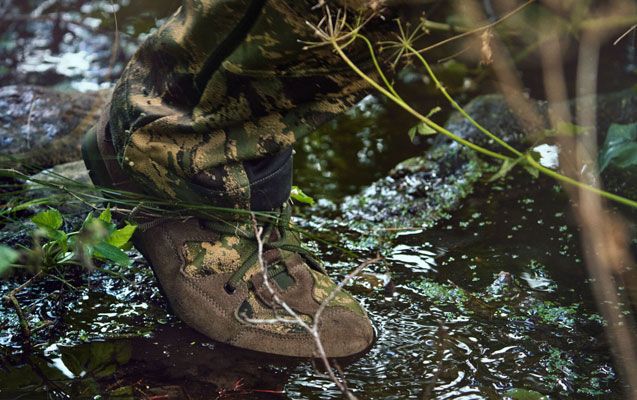
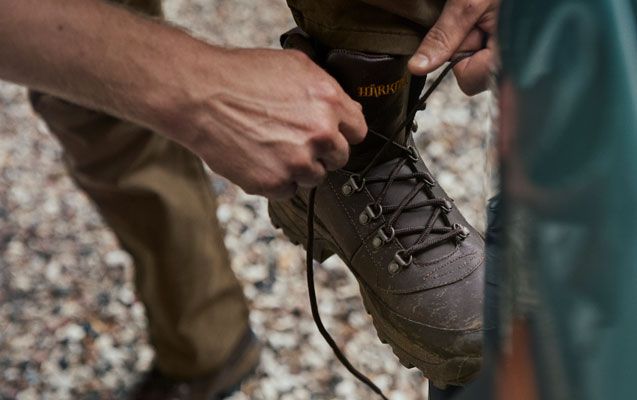
Boot height
More accurately described as shoes, very low-cut boots offer no ankle support or protection of the lower leg against rocks, thorns, branches, roots, etc. Therefore, they are only recommended for open terrain with cleared trails.
Medium height boots (covering the ankles) gives more support and protection. In rough off-trail terrain, you will need optimum ankle support and protection, and it often
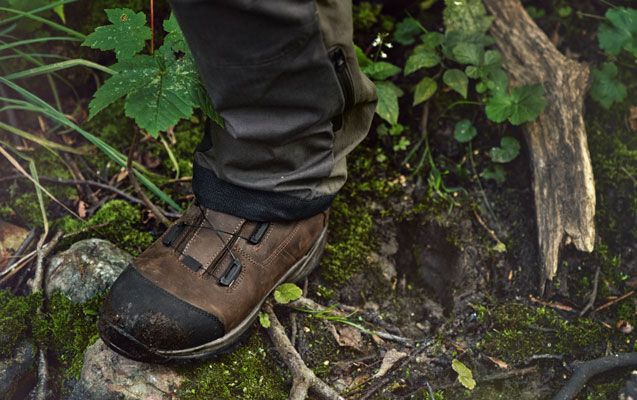
sense that you choose high boots that will also work in deeper water if they are waterproof.
Boot fit
It is of paramount importance that your boots fit as correctly as possible. A snug fit around the heel, minimum movement of your foot within the boot, and plenty of room for the toes to keep them from being squeezed or hit the front of the boot is crucial to a proper fit. The alternatives to perfect fitting boots are blisters and bruised toes, which can ruin an otherwise good hunting experience.
It is best to find a pair of boots that fit perfectly right off the shelf, but fortunately, it is also possible to adjust the fit somewhat using different insoles. It is vital that you wear the type of sock you intend to use in the field when you are trying the boots on.
Once you have purchased the boots, we recommend that you break them in, in advance of your hunting adventures. That process takes longer with leather boots than with boots made of synthetic materials. Breaking in the boots is essential because the new boots and the feet you put into them, to some extent, adjust to one another over time.
Remember that buying boots should never be a last-minute activity. It's a brilliant idea to use the boots in your everyday life for longer and longer walks for months or at least weeks before taking them to the field.
Socks are themselves a part of a boots fit. Trekking socks do not have any seems in places where they might cause blisters. If you plan to walk far and wear the boots for long periods, blisters can be prevented by using thin inner socks to reduce friction and moist between skin and sock. Use inner socks designed for trekking and avoid cotton next to the skin as it will absorb and hold the moist like a kitchen rag.
Some outer socks designed for trekking offer better ventilation of moist than others. Remember that the socks are a vital part of the combined footwear solution.
Boot maintenance
Hunting boots will last longer if you maintain them according to the specifications that we offer. When wearing the boots, they will typically become increasingly comfortable throughout the boots' entire lifespan, making perfect sense of taking good care of them.
